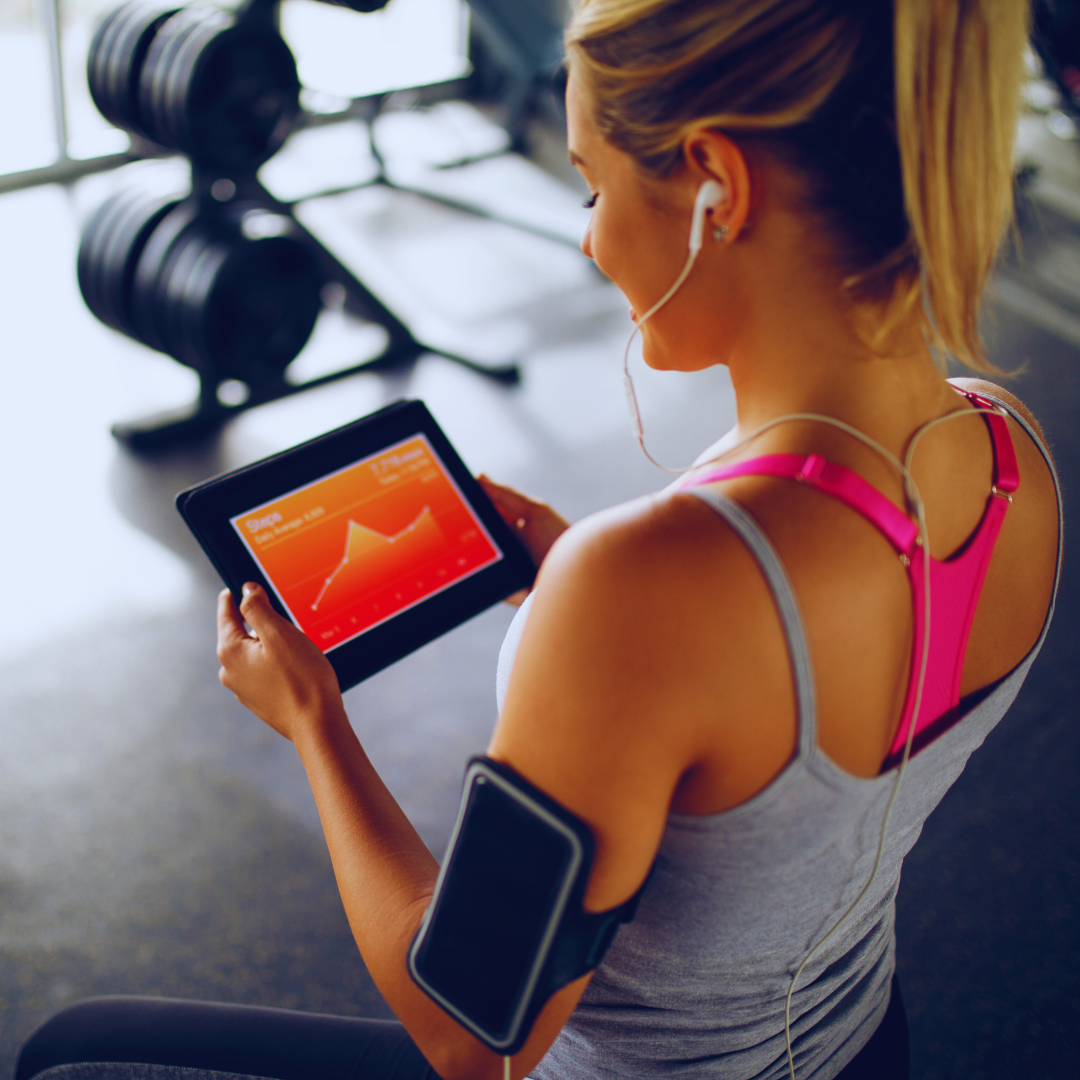In today’s digital age, tracking fitness progress has never been easier. With countless options available, individuals looking to enhance their fitness journey can find apps that cater to various needs and goals. The best fitness apps not only help users monitor their workouts and nutrition but also foster accountability and support along the way.
These applications come equipped with features ranging from calorie tracking to workout logging, making it simpler for users to stay focused on their fitness goals. With personalized plans and progress reports, they serve as essential tools for anyone striving for a healthier lifestyle.
Choosing the right app can significantly impact one’s motivation and success in reaching health and fitness objectives. Engaging with these digital partners allows users to celebrate small victories, making the journey more enjoyable and effective.
Analyzing Top Fitness Apps
Fitness apps serve diverse needs, from tracking workouts to providing access to live classes. Evaluating the best options involves examining their features, user interfaces, and costs.
Feature Breakdown
Top fitness apps offer a range of features tailored to different workout preferences. For instance, Peloton provides live and on-demand cycling classes, while Fitbod focuses on strength training with personalized workout plans. Apple Fitness+ integrates with wearable technology like the Apple Watch for seamless fitness tracking.
Apps like Freeletics offer HIIT workouts suited for those with limited time. Fitbit excels in tracking overall activity levels, including cardio and daily steps. JEFIT allows users to log workouts and access a large exercise database, making it a favorite among those wanting a comprehensive workout tracker. Considering which features align with individual fitness goals is essential.
Ease of Use and User Interface
User experience significantly impacts the effectiveness of fitness apps. A user-friendly interface can enhance motivation and adherence to fitness routines. Apps like Sweat App and Alo Moves design their interfaces to be intuitive, enabling users to navigate through workouts quickly.
In contrast, more complex apps can become overwhelming. Fiton balances simplicity with functionality, offering easily accessible workout plans and progress tracking. Strava emphasizes social features, allowing users to share achievements, which can enhance community support. Evaluating how easy the app is to use can determine its sustainability in a fitness routine.
Comparing Subscription Costs and Trial Periods
Pricing structures vary among fitness apps, impacting user choices. Many apps offer free trials, allowing potential users to explore features before committing. For instance, Peloton provides a 30-day trial for new users, while Future App often features introductory pricing for personalized training.
Apps like Fitbod charge a monthly fee but provide discounts for longer subscriptions. Alo Moves offers a comprehensive library of classes at a competitive price, making it a worthwhile investment for regular users. Evaluating these costs alongside the trial periods can help users make informed decisions that support their fitness journey.
Setting and Achieving Fitness Goals
Effective fitness apps provide users with the tools to set clear goals and measure their progress. This involves personalized plans, tracking capabilities, nutrition guidance, and integration with other health platforms.
Personalized Workout Plans
Fitness apps often offer customized workout plans tailored to individual fitness levels and goals. Users can choose from various workouts, including strength training, cardio, or bodyweight exercises. These plans help maintain motivation by providing structure.
For someone focusing on weight loss, a workout app may include a mix of high-intensity interval training (HIIT) and running sessions. This approach maximizes calorie burn while ensuring workouts are varied. Additionally, many apps allow users to adjust plans based on progress, which fosters a sense of achievement.
Activity Tracking and Progress Reports
Activity tracking is a critical feature of fitness apps. Users can log workouts, measure performance, and analyze fitness data over time. This functionality helps identify trends and assess progress toward fitness goals.
Regular progress reports provide insights into improvements in strength, endurance, and overall fitness. Many apps, like MyFitnessPal, track calories and exercise, offering users comprehensive feedback. This data-driven approach encourages users to stay committed and adjust their strategies as needed.
Nutrition Guidance and Meal Plans
Nutrition tracking is essential for achieving fitness goals. Many apps offer meal plans that align with workout regimes, helping users stay accountable. These plans often consider caloric intake and macronutrient goals.
Users can input meals to monitor their nutrition and understand how dietary choices affect performance. Some apps provide recipes and food suggestions, enhancing meal planning efficiency. By focusing on balanced diets, these apps support users in reaching their weight loss and fitness goals.
Integration with Health Platforms
Many fitness apps integrate seamlessly with platforms like Apple Health. This feature streamlines data tracking, allowing users to collect information from various sources in one place.
Integration enhances the user experience by providing a holistic view of health metrics. Users can monitor sleep patterns, physical activity, and nutrition all within the same application. This comprehensive approach strengthens users’ ability to set informed goals and track their overall wellness journey.
Exploring Diverse Workout Options
Fitness apps provide a variety of workout options that cater to different preferences and goals. This section covers the key categories including cardio, strength training, flexibility routines, and high-intensity workouts, highlighting how each contributes to fitness journeys.
From Cardio to Strength Training
Cardio exercise plays an essential role in any fitness routine. It boosts heart health, improves endurance, and aids in weight management. Popular forms include running, cycling, and HIIT workouts, which can all be tailored for home workouts or gym sessions.
Strength training focuses on building muscle and enhancing metabolism. It can be integrated into fitness plans through weightlifting, bodyweight exercises, or resistance bands. Effective apps allow users to log their sets, reps, and weights, facilitating progress tracking and adjustments in their training plans.
Yoga, Pilates, and Flexibility Workouts
Yoga classes are valuable for promoting relaxation and improving flexibility. Various styles, such as Hatha and Vinyasa, cater to different fitness levels. Fitness apps often provide guided sessions, enabling users to practice meditation and breathing techniques to enhance their well-being.
Pilates emphasizes core strength and stability, often suitable for home workouts or personal training. It helps improve posture and prevents injuries through controlled movements. Many fitness apps offer Pilates classes that focus on specific muscle groups, making it easier for individuals to incorporate this discipline into their fitness routines.
High-Intensity Interval Training (HIIT)
HIIT workouts are highly effective for those seeking quick, intense sessions that lead to significant results. This method alternates short bursts of intense exercise with periods of rest, making it accessible for both gym workouts and at-home sessions.
Apps featuring HIIT routines allow users to select their preferred exercises tailored to their fitness levels. Options include bodyweight movements, strength exercises, and cardio intervals. This flexibility helps them meet their personal goals while keeping workouts varied and engaging.
Leveraging Technology for Enhanced Fitness
Technology provides powerful tools for fitness enthusiasts looking to track progress and improve performance. Utilizing wearable devices, social features, and artificial intelligence can significantly enhance the workout experience.
Wearable Technology and App Integration
Wearable technology, such as fitness trackers like Fitbit, has revolutionized how individuals monitor their fitness levels. These devices can collect data on heart rate, steps taken, and calories burned, making it easier for users to understand their physical activity.
Integration with fitness apps allows users to sync data for comprehensive tracking. For instance, a running app may offer route planning and performance metrics, which can be analyzed in conjunction with wearables. This integration creates a holistic view of a user’s health and helps in setting and achieving realistic fitness goals.
The Role of Social Features in Fitness Apps
Social features play a crucial role in motivating individuals on their fitness journeys. Many apps, such as Nike Training Club and Gymshark Training, incorporate elements of community engagement.
Users can share their performance, join challenges, and follow friends, making workouts more interactive. This social aspect encourages accountability and competition, which can enhance motivation. By connecting with fitness instructors or finding workout partners, users can gain insights and support, fostering a more engaging experience.
The Impact of AI on Personal Training
Artificial intelligence is changing personal training by offering customized experiences based on individual data tracking. Fitness apps can analyze exercise habits, preferences, and performance metrics to generate personalized workout plans.
Features like custom workouts and exercise libraries help users optimize their routines. AI-driven virtual trainers often provide tailored feedback through instructional exercise videos, adjusting plans based on the user’s progress. This level of personalization caters to varying fitness levels, ensuring each user has the tools they need to succeed.


